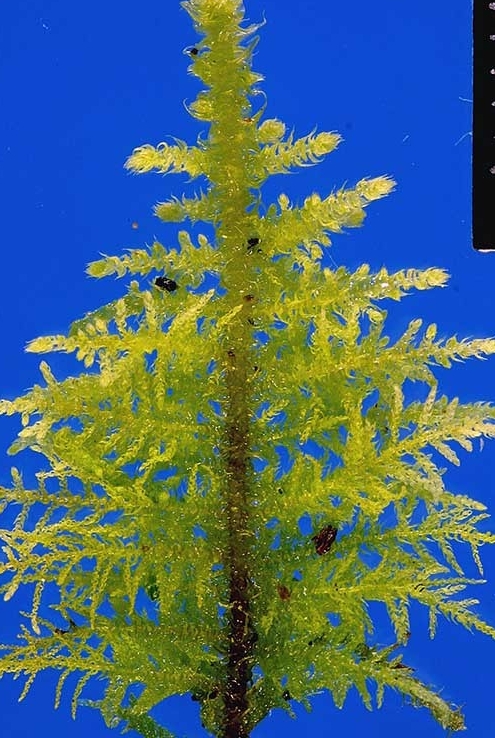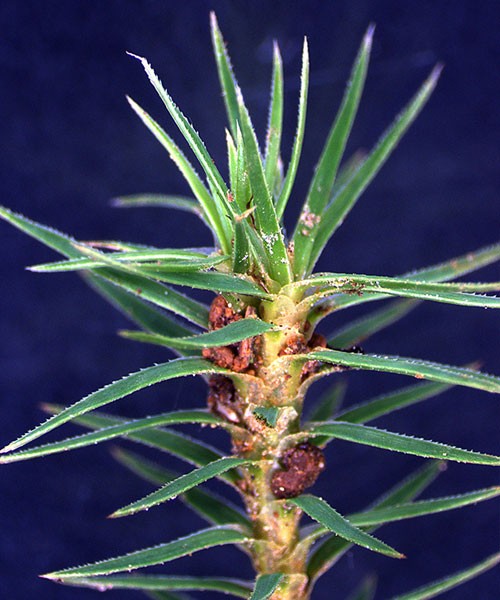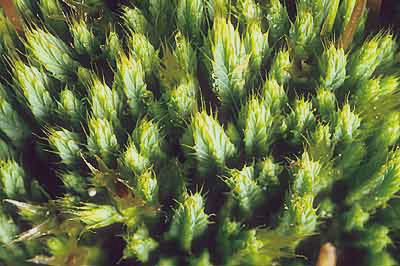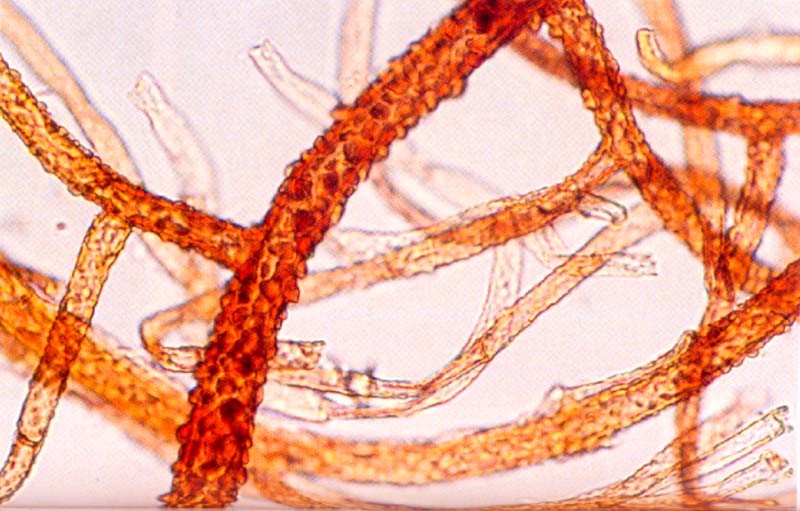Conostomum pentastichum - The leaves are arranged in five ranks along the stem which is most unusual for a moss.
(photo, Bill & Nancy Malcolm)
Please select root levels for the menu
The orientation of stems and branches determines the form of a moss.

Thuidiopsis furfurosum - Many mosses have a horizontal stem that bears branches right and left in a pinnate (herringbone) pattern to form a carpet over the soil surface.

Canalohypopterygium tamariscinum - Some mosses have a vertical main stem with horizontal branching 'fronds' covered with tiny leaves to form miniature umbrella-like 'trees'.

Polytrichadelphus magellanicus - The leaves of most mosses are in three rows, arranged in a spiral around the stem at 120° intervals -

Fissidens taxifolius In a few mosses the leaves are arranged in two rows and flattened into one plane.
See Find by Genus page for Fissidens species.

Conostomum pentastichum - The leaves are arranged in five ranks along the stem which is most unusual for a moss.
(photo, Bill & Nancy Malcolm)

photo, J Beever
Meesia muellen, rhizoids detached from the stem - Mosses do not have roots. They are anchored to the substrate by rhizoids. Rhizoids in the mosses consist of many cells, are branched and often have peg-like growths (papillae) on their walls.